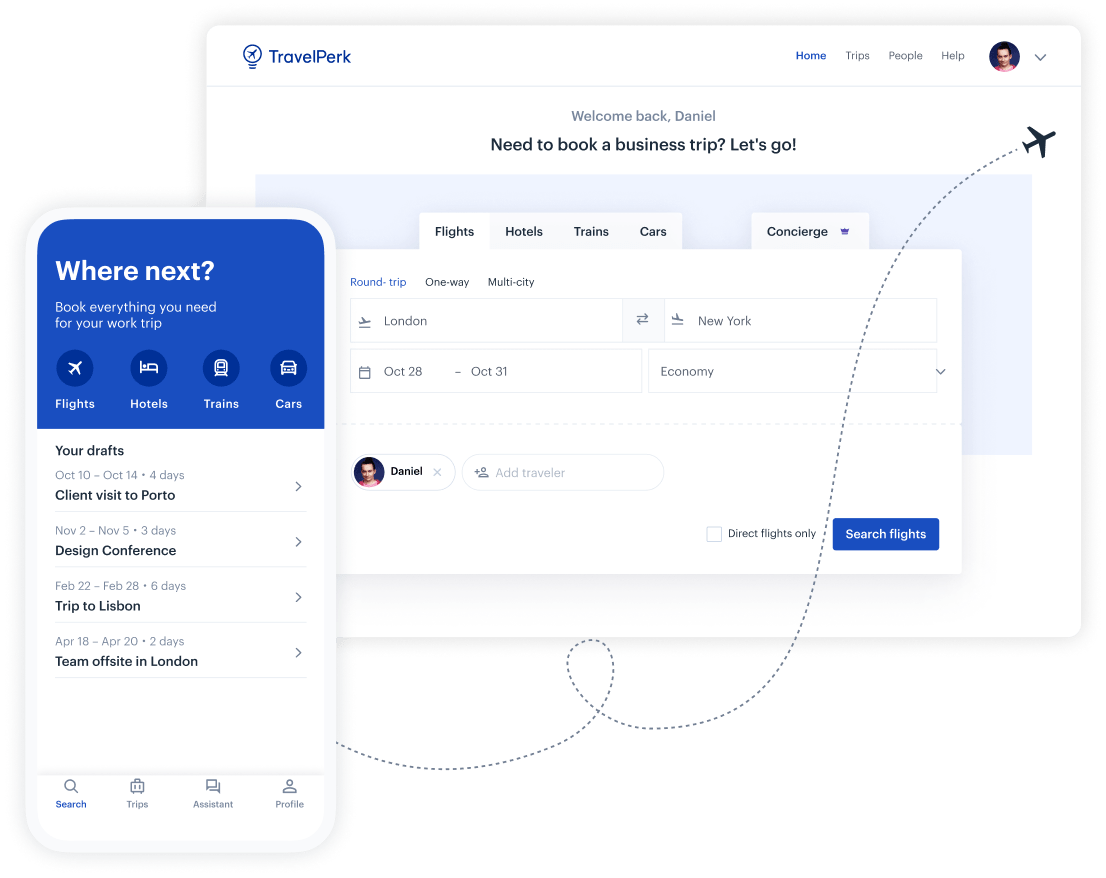Executive travel policy: what is it and what does it cover?
Having a company travel policy is important, no matter how big or small your company is. But what about senior executives? Their travel needs and the guidelines they follow may be different. In this guide you will learn everything you need to know about executive travel policies.

What is an executive travel policy?
Some companies may choose to have a special policy for senior executive travel. An executive travel policy is a corporate travel policy that applies to senior executives. It should detail every step, from getting approval to booking a trip and reporting travel expenses, such as air travel and meals.
Some reasons why companies have a different policy for their executive staff members are:
- Different roles often need different procedures.
- To avoid a lack of regulations. What is allowable for this particular employee category?
- The need to clarify who will supervise executive employees when it comes to travel for a business purpose.
What should an executive travel policy include?
Every company has different needs when it comes to corporate executive travel, so every policy is different. These are the most common elements that executive travel policies should include.
1. Introduction
The introduction should outline why the executive travel policy and procedures are in place. It’s also important to clarify which employee categories the policy is meant for. Be clear about the reasons why it’s necessary for everyone to follow the company’s travel policies, including senior executives.
Some common reasons you can include are:
- to keep employees safe
- to guarantee the right support
- to ensure fairness
2. Travel booking process
Make sure that all main steps are covered here, such as:
- Approval process
- Do you use a platform for business travel? Share the name of the booking platform.
- Do you use a corporate travel agency? Provide the travel agent's details.
- Online booking tools recommended
- Preferred suppliers
- Do you have travel managers in your company? Provide your travel manager's contact information.
- Credit card to be used: corporate or personal?
- What to do in case of cancellation or modification
- Leisure trips: can employees extend their trip?
3. Expense categories
Here’s where you clearly explain what is considered reimbursable travel-related expenses. These are the most common categories to classify business travel expenses. For each category, you can specify the per diem allowance, the processes, and the rules to keep in mind.
- Airfare
- Ground transportation
- Accommodation
- Rail transportation
- Taxis and ride-sharing
- Rental car
- Food and entertainment expenses
- Personal telephone usage
4. Non-reimbursable purchases
This is an important section that should be present in your executive travel policy. Executive employees may have different types of expenses during their trip, so it’s good to be clear about this beforehand. Here are some examples of costs that most companies don’t reimburse their employees for:
- Business class tickets
- Excess baggage fees
- Dry cleaning
- Loyalty memberships
- Minibar purchases
- Fines
- Movies, online entertainment or newspapers
- Spa expenses
- Clothes
5. Expense reports and reimbursement process
Here’s where you go into detail about how employees can request the company to reimburse them. Make sure to include all the requirements needed for employees to submit an expense report. This section should also include:
- The details of the expense management system used
- What to submit reimbursement requests for and what not
- Who will be the approver for each case
- Deadlines
- Processing times
6. Travel support, safety, and duty of care
This section should include information about how travelers can stay safe during their trip, travel insurance, travel support, and contact details both inside and outside the company.
- Travel whereabouts: make sure your employees understand it's important that the company is able to track their trip. This way, they can receive the right support in case of emergency.
- Travel support: who to contact in case of emergencies, trip cancellations or modification.
- Travel emergency contact: including insurance policy details and the contact person within the company.
- Human resources contact person in case of questions about the travel policy.

Tips and best practices
- Keep it clear and concise.
- Involve all stakeholders when approving a new executive travel policy.
- Make sure your staff knows about it, and that it’s accessible.
- Provide the right training.
- Allow for freedom of choice when possible. Showing you care about personal preferences has a positive impact on employee satisfaction and performance.
- Keep your executive travel policy up to date.
- You can use an executive travel policy template as a starting point to write your own. Check out our corporate travel policy template which you can customize to fit your company’s requirements when it comes to executive travel.
Conclusion
A well-written executive travel policy means more peace of mind, less misunderstandings and a better outcome of the business trip. It will make it easier for executive employees to follow the rules and improve their overall experience. Expenses will be easier to report, too. The whole business travel process will benefit from your executive travel policy, from beginning to end.

